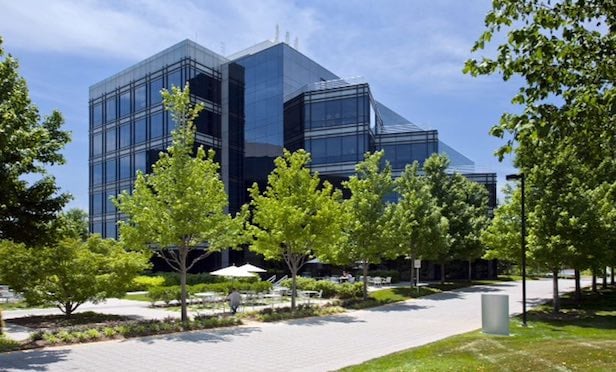
HERNDON, VA—After demand for industrial space came in well short of expectations in the year's first half, NAIOP expects absorption to get back on track in the second half. A new report from the NAIOP Research Foundation predicts an average of 66 million square feet of absorption for both the third and fourth quarters and an average of 60 million square feet per quarter in 2018. That compares to the 123 million square feet of absorption that was forecast for the first six months of 2017 and the 92 million square feet that was actually absorbed.
A major chunk of the shortfall between expectations and reality occurred in Q1, when absorption fell shy of estimates by more than 20 million square feet. The quarter saw space demand of 34 million square feet, well short of the 58 million square feet that was forecast.
Industrial's comparatively weak showing in Q1 was hardly an anomaly within the broader commercial real estate universe. “First-quarter underperformance was observed in many macroeconomic and commercial real estate variables including sales volume and pricing,” according to NAIOP's report.
“At this point, it appears the first quarter was an anomaly relative to both GDP and employment growth due to the unexpected presidential election of Donald Trump,” the report states. “The election result caught many market participants off guard and thus it appears that decisions about investments and expansions were delayed temporarily.
“Overall, market consensus seems to be that the latter half of 2017 may benefit from a release of pent-up demand,” according to the NAIOP report. “The debate about peak pricing in commercial real estate will only continue; however, space market fundamentals, especially in the industrial market, are only likely to improve as the overall economy expands.”
NAIOP's quarterly model, run by Dr. Hany Guirguis at Manhattan College and Dr. Joshua Harris at New York University, sees an economy that's back in expansion mode as a driver for continued demand. Accordingly, the potential for a slowdown in net absorption due to a stall in macroeconomic activity is now pushed back to 2019 at the earliest, but NAIOP says this is open to further outward revision if the economy continues to grow at a pace exceeding the current forecast.
“Given the uncertainty regarding policy changes in Washington, all forecasts for economic activity and even industrial space demand deserve a special caveat, the report states. “Right now, the broad markets—measured by proxy through stock prices and consumer and CEO confidence —are quite positive about future expectations relating to regulatory and possibly tax reform.
“If those positive expectations change, the economy could cool off suddenly and thus demand for industrial space could decline,” according to NAIOP's report. “Rising construction prices and labor shortages will likely moderate generation of new supply, even with rising economic growth, but will likely help rental rates and pricing continue to increase.”
More fundamentally, demand for consumer goods—whether purchased online or at brick-and-mortar stores—isn't the only driver. Citing data from the Institute for Supply Management showing that new orders are growing, as well as Census Bureau data indicating a rise in durable goods orders, NAIOP says manufacturing activity appears to still be steadily increasing in the this country as of Q2. “While this activity will require fewer jobs due to automation, it will still require more industrial facilities, further underpinning demand for industrial real estate.”

HERNDON, VA—After demand for industrial space came in well short of expectations in the year's first half, NAIOP expects absorption to get back on track in the second half. A new report from the NAIOP Research Foundation predicts an average of 66 million square feet of absorption for both the third and fourth quarters and an average of 60 million square feet per quarter in 2018. That compares to the 123 million square feet of absorption that was forecast for the first six months of 2017 and the 92 million square feet that was actually absorbed.
A major chunk of the shortfall between expectations and reality occurred in Q1, when absorption fell shy of estimates by more than 20 million square feet. The quarter saw space demand of 34 million square feet, well short of the 58 million square feet that was forecast.
Industrial's comparatively weak showing in Q1 was hardly an anomaly within the broader commercial real estate universe. “First-quarter underperformance was observed in many macroeconomic and commercial real estate variables including sales volume and pricing,” according to NAIOP's report.
“At this point, it appears the first quarter was an anomaly relative to both GDP and employment growth due to the unexpected presidential election of Donald Trump,” the report states. “The election result caught many market participants off guard and thus it appears that decisions about investments and expansions were delayed temporarily.
“Overall, market consensus seems to be that the latter half of 2017 may benefit from a release of pent-up demand,” according to the NAIOP report. “The debate about peak pricing in commercial real estate will only continue; however, space market fundamentals, especially in the industrial market, are only likely to improve as the overall economy expands.”
NAIOP's quarterly model, run by Dr. Hany Guirguis at Manhattan College and Dr. Joshua Harris at
“Given the uncertainty regarding policy changes in Washington, all forecasts for economic activity and even industrial space demand deserve a special caveat, the report states. “Right now, the broad markets—measured by proxy through stock prices and consumer and CEO confidence —are quite positive about future expectations relating to regulatory and possibly tax reform.
“If those positive expectations change, the economy could cool off suddenly and thus demand for industrial space could decline,” according to NAIOP's report. “Rising construction prices and labor shortages will likely moderate generation of new supply, even with rising economic growth, but will likely help rental rates and pricing continue to increase.”
More fundamentally, demand for consumer goods—whether purchased online or at brick-and-mortar stores—isn't the only driver. Citing data from the Institute for Supply Management showing that new orders are growing, as well as Census Bureau data indicating a rise in durable goods orders, NAIOP says manufacturing activity appears to still be steadily increasing in the this country as of Q2. “While this activity will require fewer jobs due to automation, it will still require more industrial facilities, further underpinning demand for industrial real estate.”
Want to continue reading?
Become a Free ALM Digital Reader.
Once you are an ALM Digital Member, you’ll receive:
- Breaking commercial real estate news and analysis, on-site and via our newsletters and custom alerts
- Educational webcasts, white papers, and ebooks from industry thought leaders
- Critical coverage of the property casualty insurance and financial advisory markets on our other ALM sites, PropertyCasualty360 and ThinkAdvisor
Already have an account? Sign In Now
*May exclude premium content© 2025 ALM Global, LLC, All Rights Reserved. Request academic re-use from www.copyright.com. All other uses, submit a request to [email protected]. For more information visit Asset & Logo Licensing.








